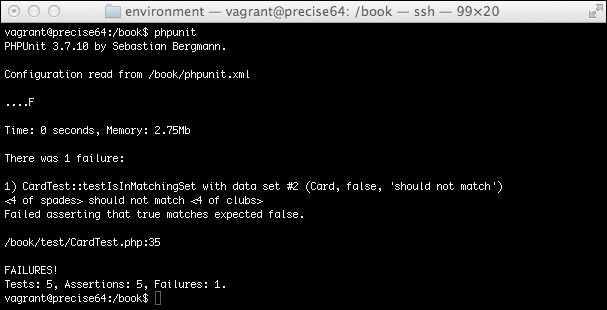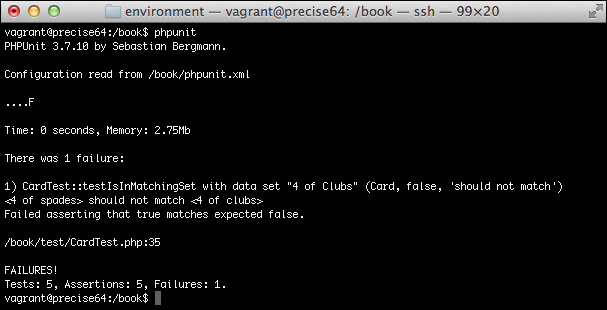You then need to assign the data provider to one of your test methods. This is done using the @dataProvider annotation. In this example, the annotation is assigned to the testIsInMatchingSet() method. You will notice that this method has three parameters. This is exactly the same number of items there are in each sub-array returned by matchingCardDataProvider().
Identifying test failures
You may be wondering how to identify which data set failed while using the data providers. Fortunately, PHPUnit takes care of this for you. Modify the matchingCardDataProvider() method to return a row that will force the test to fail.
Then, run the unit test suite and you will see the following:
As you can see it tells you the index of the data set along with the actual parameters passed as a part of that data set.
This can be improved even further by providing keys to the array that your data provider returns. Try using the following data provider:
Run the tests again to see the following output:
As you can see, you can utilize data providers to not only consolidate your code, but you can also make it very easy to isolate the data set you have problems with.



 Free Chapter
Free Chapter



